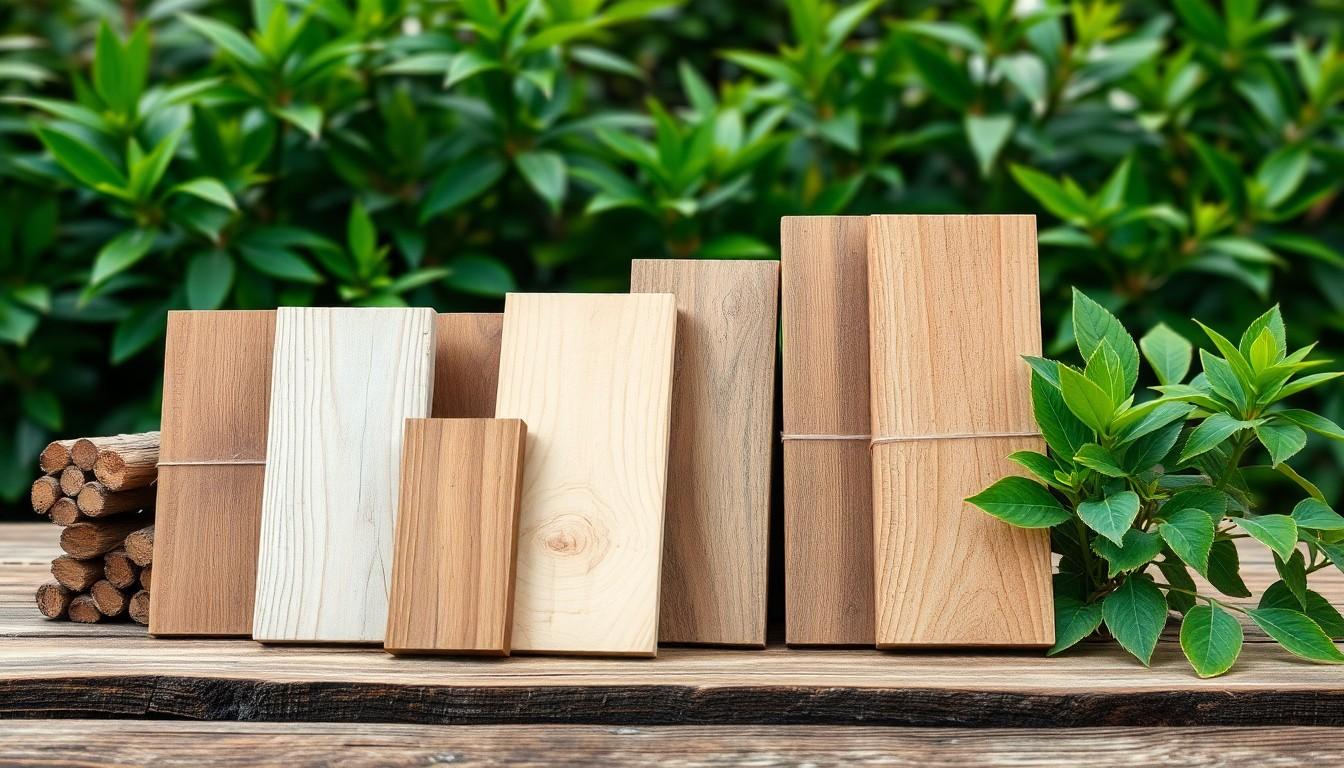In a world where trees are the unsung heroes of our planet, eco-friendly wood is stepping into the spotlight. It’s not just lumber; it’s a lifestyle choice that whispers sweet nothings to Mother Nature while giving your home a stylish upgrade. Who knew saving the environment could look so good?
Eco Friendly Wood
Eco-friendly wood refers to timber sourced from sustainably managed forests or reclaimed materials. This type of wood supports responsible forestry practices, ensuring a balance between consumption and regeneration. Certifying organizations such as the Forest Stewardship Council (FSC) provide guidelines and labels to indicate wood’s sustainability.
Reclaimed wood acts as another sustainable option. This material comes from old buildings, furniture, or other structures. It minimizes environmental impact by reducing the demand for new lumber and promotes the recycling of valuable resources.
Sustainable forestry practices are crucial to eco-friendly wood. These practices include selective logging, which preserves the surrounding ecosystem, and replanting trees to maintain forest health. Such methods help protect wildlife habitats and promote biodiversity.
Manufacturers favor eco-friendly wood for several reasons. This wood enhances indoor air quality, as it contains fewer harmful chemicals and additives compared to conventional options. Furthermore, using sustainable materials in building can improve the overall durability of structures.
Consumers appreciate eco-friendly wood not only for its environmental benefits but also for its aesthetic value. Various wood species offer unique grains and colors, adding character to homes and offices. Choosing this wood reflects a commitment to sustainable living while elevating design elements.
As the demand for eco-friendly built environments grows, understanding its benefits influences purchasing decisions. Selecting eco-friendly wood is a step towards a greener future, allowing individuals to contribute to sustainability while enjoying the beauty of natural materials.
Types of Eco Friendly Wood

Various types of eco-friendly wood exist, each providing unique characteristics and benefits. Selecting the right type contributes to sustainability and enhances the desired aesthetic.
Bamboo
Bamboo stands out as a highly renewable resource. It grows rapidly, reaching maturity in three to five years. This grass absorbs carbon dioxide efficiently, improving air quality. Products made from bamboo include flooring, furniture, and decorative items. Its strength and versatility appeal to those seeking sustainable options.
Reclaimed Wood
Reclaimed wood offers a way to utilize old structures in new applications. Sourced from barns, factories, and other buildings, it reduces waste and minimizes the environmental footprint. Each piece often showcases unique character and history, adding charm to any project. Renovators frequently use reclaimed wood for furniture, flooring, and accent walls. Choosing reclaimed wood supports recycling efforts and conserves natural resources.
FSC-Certified Timber
FSC-certified timber is sourced from forests that emphasize responsible management. The Forest Stewardship Council ensures that timber comes from sustainable practices. Manufacturers trust this certification to indicate compliance with environmental standards. Structures built with FSC-certified timber often show increased durability and performance. Homeowners seeking eco-friendly materials can confidently choose FSC-certified options, knowing they contribute to forest conservation.
Benefits of Using Eco Friendly Wood
Eco-friendly wood offers several advantages, promoting sustainability and improving overall well-being. Below are key benefits associated with its use.
Environmental Impact
Using eco-friendly wood significantly reduces deforestation’s adverse effects. Sustainable sourcing ensures that trees are harvested responsibly, allowing forests to regenerate naturally. Many organizations, like the Forest Stewardship Council, certify eco-friendly wood, promoting responsible forestry practices that contribute to ecosystem preservation. Opting for reclaimed wood minimizes landfill waste while reducing the carbon footprint associated with new timber production. Sustainable forestry methods, including selective logging and replanting, foster biodiversity and protect wildlife habitats.
Health Benefits
Indoor air quality often improves with the use of eco-friendly wood. Unlike traditional wood treatments, sustainable options typically avoid harmful chemicals and toxins. These natural materials contribute to a healthier living environment, reducing the risk of respiratory issues. Homeowners often notice a positive difference in their space’s atmosphere, benefiting mental well-being and comfort. Unique wood characteristics, such as natural finishes, enhance aesthetics and eliminate the concerns linked to volatile organic compounds commonly found in synthetic materials.
How to Choose Eco Friendly Wood
Choosing eco-friendly wood involves understanding its certifications and sourcing practices, ensuring a sustainable option for projects.
Certification Labels
Certification labels are crucial for identifying sustainable wood. The Forest Stewardship Council (FSC) offers a widely recognized standard. Look for products with the FSC label, signifying adherence to responsible forestry practices. Another certification is the Sustainable Forestry Initiative (SFI), which emphasizes sustainable resource management and environmental protection. Products with these labels guarantee that the wood comes from responsibly managed forests. Buyers can also consider the Programme for the Endorsement of Forest Certification (PEFC), which promotes sustainable forestry globally. Each label provides assurance that the wood contributes to conservation efforts. When shopping, prioritizing certified wood ensures environmentally friendly choices.
Sourcing Practices
Sourcing practices significantly influence eco-friendly wood’s sustainability. Researching the origin of wood reveals its environmental impact. Choose wood that comes from sustainably managed forests, where selective logging and replanting occur. This method protects ecosystems and promotes biodiversity. Consider reclaimed wood as an alternative, often sourced from deconstructed buildings and furniture. Using reclaimed wood reduces waste and lowers the demand for new timber. Verify that manufacturers maintain ethical and sustainable practices throughout their supply chains. Understanding these sourcing methods helps consumers make informed decisions, contributing positively to the environment. Prioritizing sustainable sourcing leads to better choices for projects and the planet.
eco-conscious choices
Choosing eco-friendly wood is a powerful way to make a positive impact on the environment while enhancing the beauty of living spaces. By selecting sustainably sourced or reclaimed materials, individuals support responsible forestry practices and contribute to the health of ecosystems. The unique aesthetics and health benefits of eco-friendly wood provide a compelling reason for homeowners and builders to embrace this sustainable option.
With the increasing awareness of environmental issues, opting for eco-friendly wood not only reflects a commitment to sustainability but also elevates the quality of indoor environments. As more people prioritize eco-conscious choices, the demand for these materials will continue to grow, paving the way for a greener future.




